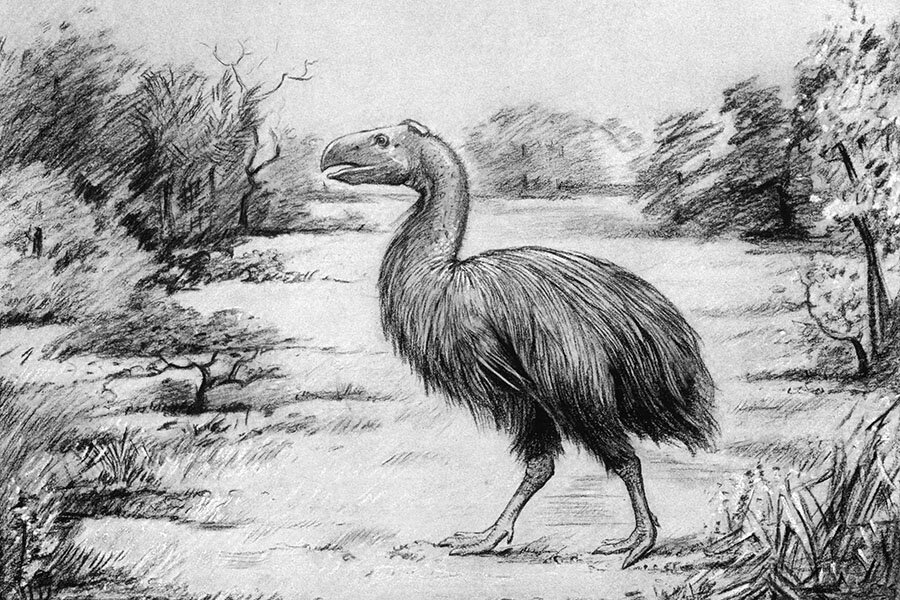Giant, flightless birds stalked the Arctic swamps 53 million years ago
Loading...
Scientists have found what could be Big Bird's prehistoric ancestor on an island in the Arctic Circle.
Giant, flightless birds with horse-size heads probably stalked the Arctic some 53 million years ago when the it was a balmy swamp, according to a study published Friday in the journal Scientific Reports.
In fact, scientists' suspicions are based on a single toe bone found on Canada's Ellesmere Island in the 1970s. That toe bone is a perfect match for Gastornis, an ancient bird that lived in what is now Wyoming in North America during the same time period, according to researchers at the Chinese Academy of Sciences and the University of Colorado at Boulder
"I couldn't tell the Wyoming specimens from the Ellesmere specimen, even though it was found roughly 4,000 kilometers (2,500 miles) to the north," study co-author Thomas Stidham of the Chinese Academy of Sciences said in a statement.
The ancient bird was probably a fearsome sight.
"Based on skeletal evidence, scientists know that Gastornis was built like a NFL lineman, standing around six feet tall, and weighing several hundred pounds," writes The Christian Science Monitor. "Its head was approximately the size of a modern day horse’s head."
Researchers originally speculated that the bird was a carnivore and used its size to intimidate predators. More recently, scientists have suggested it was, in fact, an herbivore, and used its giant beak to rip apart foliage, nuts, seeds, and fruit.
The study also found a second, smaller, ancient bird in the Arctic, Presbyornis. This bird, whose existence there is also based on a single bone, a fossilized humerus, or upper wing bone, was smaller than Gastornis. It may have looked like a prehistoric duck or goose.
“We knew there were a few bird fossils from up there, but we also knew they were extremely rare,” said Jaelyn Eberle, of the University of Colorado, one of the study’s authors, in a statement.
Today, Canada's Ellesmere Island, adjacent to Greenland, is one of the most remote, dry, and cold places on Earth, with winter temperatures dropping to negative 40 degrees Fahrenheit.
But it was a very different place 53 million years ago when Gastornis and Presbyornis roamed the Earth. During the Eocene epoch, Ellesmere would have been a warm swamp similar to the cypress swamps found in the southeastern US, according to the study. And fossil evidence suggests the area was rife with flora and fauna, including turtles, alligators, primates, tapirs, and even large hippo-like and rhino-like mammals.
In fact, Ellesmere's ancient climate may provide scientists a glimpse of what climate change may bring to Earth's coldest regions.
“I’m not suggesting there will be a return of alligators and giant tortoises to Ellesmere Island any time soon, said Ms. Eberle, “But what we know about past warm intervals in the Arctic can give us a much better idea about what to expect in terms of changing plant and animal populations there in the future.”






